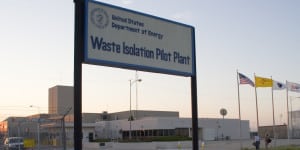
Weapons Complex Monitor Vol. 29 No. 16
Visit Archives | Return to Issue PDF
Visit Archives | Return to Issue PDF
Weapons Complex Monitor
Article 1 of 12
April 20, 2018
DOE Paused Idaho Waste Shipments After Drum Breach

The Energy Department’s Idaho National Laboratory suspended transuranic waste shipments to the Waste Isolation Pilot Plant (WIPP) in New Mexico immediately after an April 11 incident in which at least one 55-gallon drum of radioactive waste overheated and ejected…
Partner Content